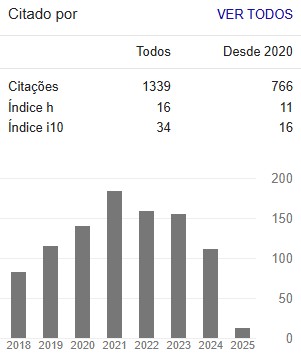Association of nutritional status with markers of iron deficiency anemia in preschool children attending an ESF in Presidente Prudente-SP.
Abstract
Iron deficiency is the cause of 50% of anemia cases, being related to an unbalanced diet and nutrient malabsorption, affecting mainly children. The aim of the present study was to relate anthropometric measurements and markers of iron deficiency anemia in children attending a Family Health Strategy (FHS). Information was collected from medical records about breastfeeding, biochemical indicators of anemia and recent anthropometric measurements. Correlation analyzes were established between anthropometric measurements and blood count values, considering a level of statistical significance of 5% (p <0.05). The results show that 27.27% are in anemia, and only 19.69% of the 66 children had iron and ferritin tests. There was no correlation between BMI and Hb and Ht results. It was concluded that the prevalence of iron deficiency anemia, identified by Hb values, was low. However, there is a high occurrence of prophylactic supplementation without indication with ferrous sulfate, increasing the risk of excessive iron supplementation.
Downloads
Downloads
Published
Issue
Section
License
Os artigos submetidos à revista Colloquium Vitae estão licenciados conforme CC BY-NC-ND. Para mais informações sobre essa forma de Licenciamento, consulte: http://creativecommons.org/licenses/by-nc-nd/4.0/.
A disponibilização é gratuita na Internet, para que os usuários possam ler, fazer download, copiar, distribuir, imprimir, pesquisar ou referenciar o texto integral dos documentos, processá-los para indexação, utilizá-los como dados de entrada de programas para softwares, ou usá-los para qualquer outro propósito legal, sem barreira financeira, legal ou técnica.

